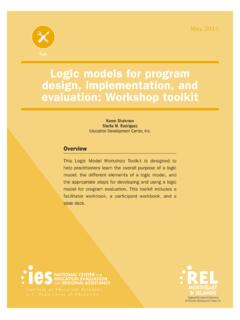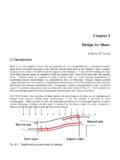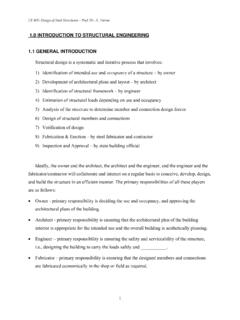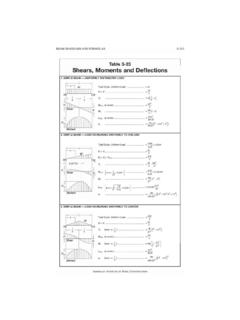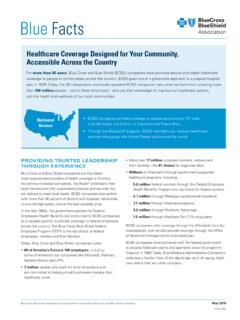Transcription of MEANINGFUL COMMUNITY ENGAGEMENT FOR HEALTH …
1 MEANINGFUL COMMUNITY ENGAGEMENT FOR HEALTH AND EQUITY COMMUNITY ENGAGEMENT CAN HARNESS THE SKILLS AND TALENTS OF A COMMUNITY S MOST IMPORTANT RESOURCE: ITS PEOPLE. INVOLVING COMMUNITY members IN HEALTH INITIATIVES CAN FOSTER CONNECTEDNESS AND TRUST, IMPROVE ASSESSMENT EFFORTS, AND BUILD THE CAPACITY OF INDIVIDUALS TO POSITIVELY AFFECT THEIR COMMUNITY . ADDITIONALLY, THIS ENGAGEMENT CAN ENHANCE THE EFFECTIVENESS OF PROPOSED STRATEGIES AND INCREASE THE SUSTAINABILITY OF EFFORTS. CONSIDER THESE IDEAS TO ENHANCE COMMUNITY ENGAGEMENT ACTIVITIES.
2 Understand the Historical Context Before Developing Your ENGAGEMENT Strategy Examine the history of the COMMUNITY as well as past ENGAGEMENT efforts, to understand any issues, and to learn what has worked and what has been less successful. For example, years of neglect and conflict may have contributed to distrust and prevented MEANINGFUL ENGAGEMENT between a COMMUNITY and local organizations. Try to get an accurate picture of how your organization and its ENGAGEMENT strategies are perceived, and work with COMMUNITY leaders to address any barriers to ENGAGEMENT .
3 Build COMMUNITY Relationships Early On Authentic COMMUNITY ENGAGEMENT takes time and requires an ongoing commitment from all involved. Establish and maintain strong relationships with communities experiencing HEALTH inequities before funding opportunities arise or urgent HEALTH issues develop. 10 Assess and Address Organizational Barriers to COMMUNITY ENGAGEMENT Some organizations may be reluctant to begin an ENGAGEMENT process due to the necessary time commitment, the staff skills needed, and the ability to demonstrate effectiveness. There may also be concerns about the effort becoming unmanageable.
4 To address these concerns, develop ENGAGEMENT plans and principles that provide a systematic approach to conducting ENGAGEMENT activities. Additionally, consider enlisting the help of other trusted organizations to build staff skills and support ENGAGEMENT efforts. Select ENGAGEMENT Techniques Appropriate for Your Context Consider ENGAGEMENT techniques based on the purpose and length of ENGAGEMENT , as well as the resources available to your organization. Examples of ENGAGEMENT activities include interviews with COMMUNITY members , focus groups, COMMUNITY forums, COMMUNITY assessments and mapping, PhotoVoice, COMMUNITY -based participatory research, resident participation on boards or councils, and paid positions for residents within organizations.
5 Understand and Address Barriers That May Prevent COMMUNITY Participation Consider populations that are experiencing HEALTH inequities in your COMMUNITY ( , people of color, people with disabilities, LGBT populations) and potential barriers they may face with ENGAGEMENT efforts. COMMUNITY members often have many demands and may be unclear about the value of their involvement. Respect COMMUNITY members time and efforts by having a clear and agreed-upon purpose for ENGAGEMENT . When necessary, conduct meetings in native languages or provide interpretation or other services needed to address language and cultural barriers to participation.
6 Conduct ENGAGEMENT activities at times and places that are convenient to the COMMUNITY and provide transportation or childcare services, if needed. Support and Build the COMMUNITY s Capacity to Act COMMUNITY members are vital assets for broader COMMUNITY improvements and may have a long-term interest in the COMMUNITY s well-being. Choose ENGAGEMENT activities that build on the capacity of COMMUNITY members . These activities can increase their awareness of HEALTH inequities and provide skills on how to intervene. Such ENGAGEMENT activities may include cultivating residents as leaders or supporting local coalitions or networks.
7 These efforts can serve a COMMUNITY beyond any one project and can also position COMMUNITY members and organizations to apply for additional funding to help sustain efforts. Value Both COMMUNITY Expertise and Technical Expertise Many communities benefit from engaging individuals and organizations with technical expertise in certain HEALTH issues. Such expertise can provide lessons learned from initiatives in other settings, as well as guidance to avoid unnecessary barriers in implementation. However, it is critical that the expertise and perspective of COMMUNITY members those ultimately impacted by any initiative be respected and valued when engaging such technical expertise.
8 DON T LEAVE THE COMMUNITY BEHIND, LET THE COMMUNITY LEAD. 23 Lark Galloway Gilliam Executive Director of COMMUNITY HEALTH Councils 11 HEALTH EQUITY IN ACTION A COMMUNITY networker standing adjacent to a COMMUNITY store that supports obesity prevention efforts in Chicago, IL. Provide Individualized Attention Through COMMUNITY Networkers Chicago, IL Consortium to Lower Obesity in Chicago Children (CLOCC) In its first decade, the Consortium to Lower Obesity in Chicago Children (CLOCC) decided to focus on 10 Chicago neighborhoods with disproportionate rates of childhood obesity.
9 These communities were referred to as Vanguard Communities and are primarily low-income and communities of color. To make sure the consortium developed and implemented effective strategies to reduce such HEALTH inequities, CLOCC sought out MEANINGFUL ways for organizations and individuals in the Vanguard Communities to be involved in the design , implementation, and evaluation of obesity-focused initiatives. Five COMMUNITY networkers (employed as full-time staff members ) served as a direct link to five of the Vanguard Communities. Other staffing and partnering models were developed for the remaining five neighborhoods.
10 These COMMUNITY networkers served as liaisons between communities and CLOCC, and spent the majority of their time in the field engaged in their assigned communities. They brought the needs and strengths of the communities to the attention of the consortium. Because the COMMUNITY networkers had deep ties to their communities, they understood the context in which activities took place. They were able to provide COMMUNITY partners and members with resources, technical assistance, and other relevant information from the consortium. This model was highly successful in connecting CLOCC to the COMMUNITY and developing a portfolio of effective COMMUNITY -based strategies for obesity prevention.











